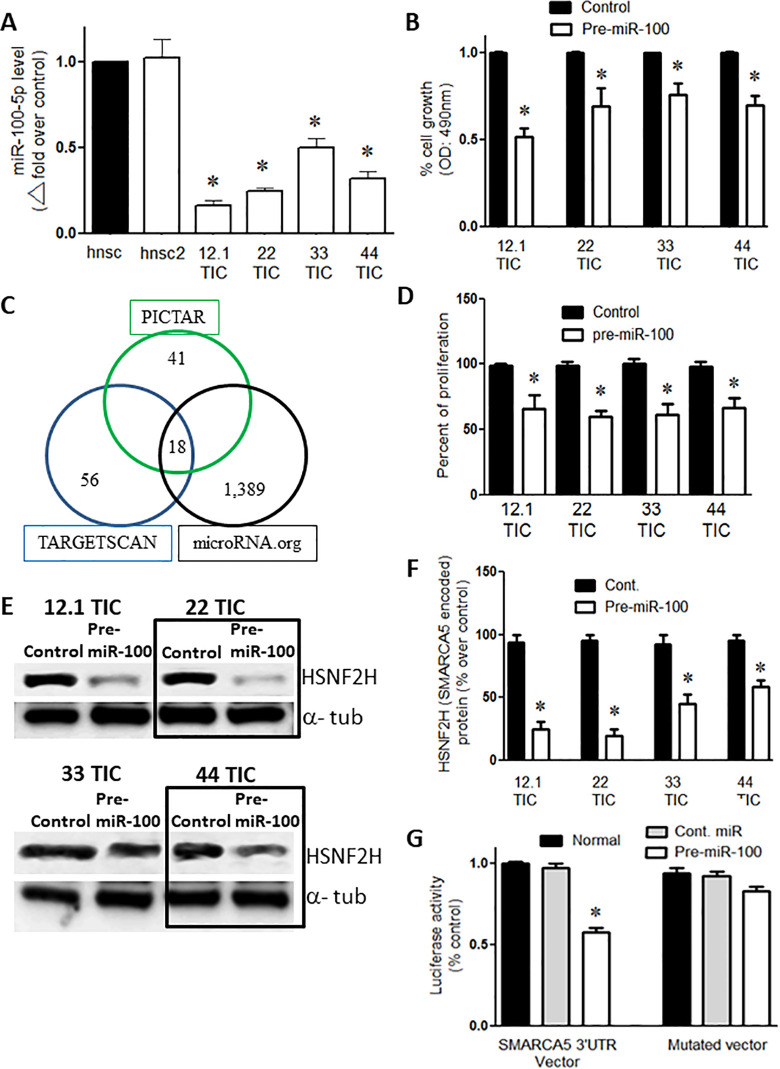Figure 1.
Overexpression of pre-miR-100 reduces proliferation and targets SMARCA5. (A) qPCR shows that the expression of miR100-5p is lower in GBM TICs (12.1, 22, 33, and 44) compared to human neural stem cells lines (hnsc and hnsc2). (B) Percentage of normalized cell growth showing that the overexpression of pre-miR-100 reduces the number of GBM TICs compared to controls as determined by the MTS assay. (C) The targets of miR-100-5p as predicted by 3 algorithms: PICTAR, TARGET SCAN, and microRNA.org. The intersection of the circles represents the number of shared targets. (D) The overexpression of pre-miR-100 decreases proliferation in GBM TICs compared to the control. The results were normalized for pre-miR-100 expression (E) Immunoblots showing the reduction of SMARCA5-encoded HSNF2 H protein levels following the transient expression of pre-miR-100. The reduction in HSNF2 H levels does not occur when control miR is overexpressed. The boxes are included to make the blot easier to interpret. (F) The quantification of the immunoblot in panel (E) shows that HSNF2 H levels are reduced by 40–70% when pre-miR-100 is overexpressed. (G) Pre-miR-100 inhibits the luciferase signal from the SMARCA5 3’UTR reporter compared to controls that utilize a different miRNA or a reporter with a mutated target site. The host cells used were HEK293 T cells. Asterisk denotes statistical significance of p < 0.05.

